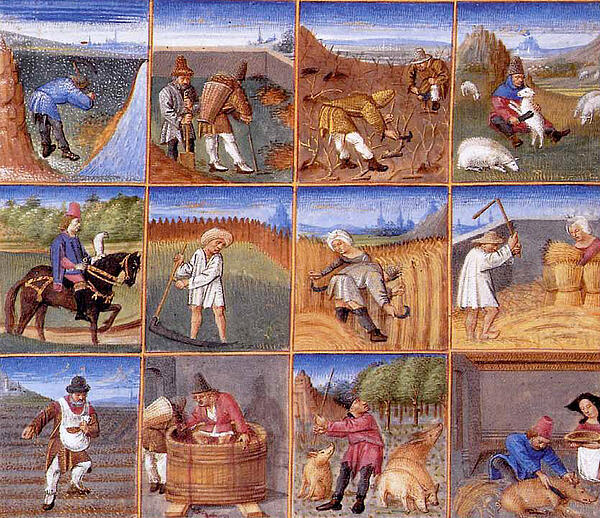Medieval Farming
The lives of people in Medieval England revolved around farming. Peasants worked the land, villages provided land and Medieval towns lived off the food that was produced nearby.
With no access to tractors or harvesters like farmers today, Medieval farmers relied on basic tools and had to plan well in advance for the specific work that took place each month of the year.

Under the feudal system, farming land was owned by the lords of the manor and peasants would work on specific strips of land on their behalf. This system is responsible for the phrase ‘strip farming’, which is often used to describe this method of working land.
The most valuable asset to a farmer was an ox, which (along with horses) were known as ‘beasts of burden’ as they were able to carry out a lot of the work people could not. However, as peasants were unable to purchase oxen themselves, they would often club together with other villages to ensure farming was completed across the region.
Aside from oxen, tools used by farmers included metal tipped ploughs that would overturn the soil and harrows used to cover seeds. However, the lack of fertilisers and only sparing use of manure meant growing crops was challenging, requiring a lot of hard work and some good luck.
Sun was a particularly important factor during the summer growing season, when a single burst of heavy rain could cause crop failure. Crops were also affected by too much sunshine and spring frosts, which could seriously damage seeds and prevent growth.
Even in hard times, peasants would still be required to pay their taxes and many estates employed reeves to ensure they were working as hard as possible to produce successful harvests.
See also: Medieval Farming Calendar
MLA Citation/Reference
"Medieval Farming". HistoryLearning.com. 2025. Web.
